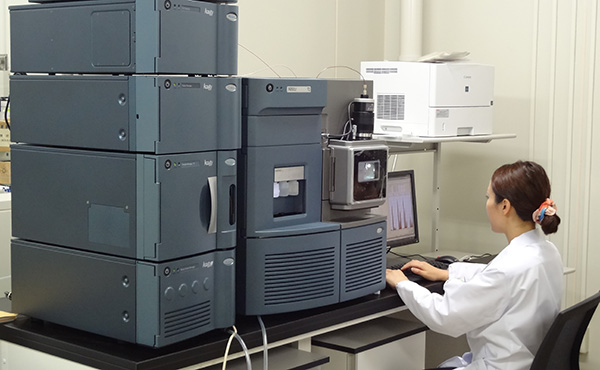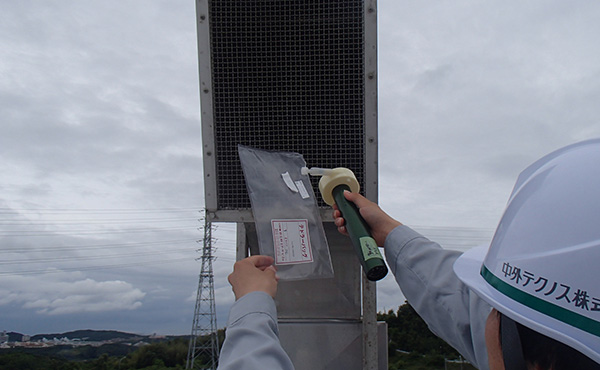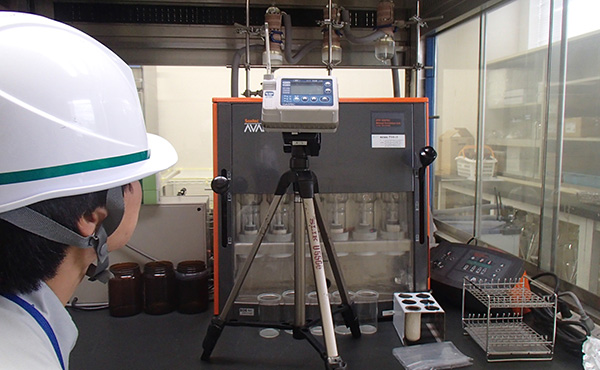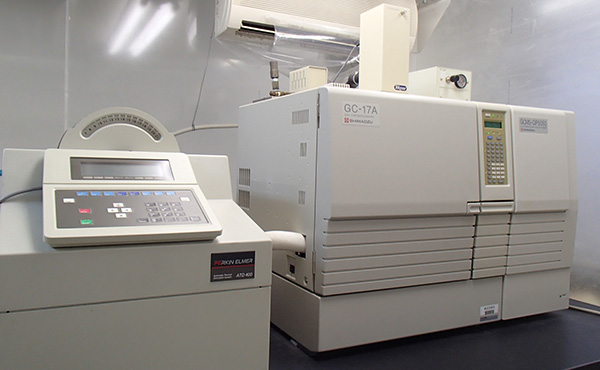- HOME
- Top Page
- Our Businesses
- Environmental Analysis
Environmental Analysis
Chugai Technos analyzes air, water quality, exhaust gas, wastewater, waste, etc. and performs environmental monitoring and chemical substance emission status surveys, based on more than 40 years of experience and advanced expertise, to provide a variety of environmental data, such as the analysis of trace hazardous chemical substances, with the goal of creating a comfortable
Asbestos, RCF (Refractory Ceramic Fiber) Surveys and Analysis
-
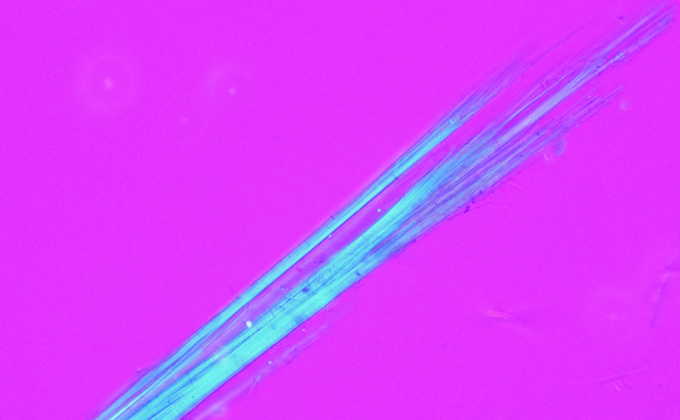
-
JIS A 1481-1 (2016) polarizing microscopy (PLM method) is used to perform qualitative and quantitative analysis of asbestos in building materials.
We also support JIS A 1481-2 (2016) and JIS A 1481-3 (2014) using an X-ray diffractometer, JIS A 1481-4 (2016) by the point counting method using a polarization microscope, as well as ISO methods and EPA methods. Surveys of asbestos usage in buildings are conducted by surveyors of building asbestos-containing building materials, first-class architects, and asbestos diagnosticians.
In addition to phase-contrast microscopy, phase-contrast / polarization microscopy, dispersion dying, and electron microscopy can be widely used for asbestos measurements in air during demolition work and environmental measurements.
We also support the collection and analysis of RCF (refractory ceramic fiber) added to specified chemical substances.
PCB Analysis
We support everything from PCBs (polychlorinated biphenyls) in the environment, to insulating oils for various heavy electrical equipment and graduation judgment tests for PCB-treated products.
We rely on our track record of insulating oil analysis to quickly provide high-precision data using GC-ECD or HR-GC / MS. Insulated oil sampling containers can be shipped on the same day free of charge.
Foreign Matter Analysis, Qualitative Analysis of Unknown Samples
-
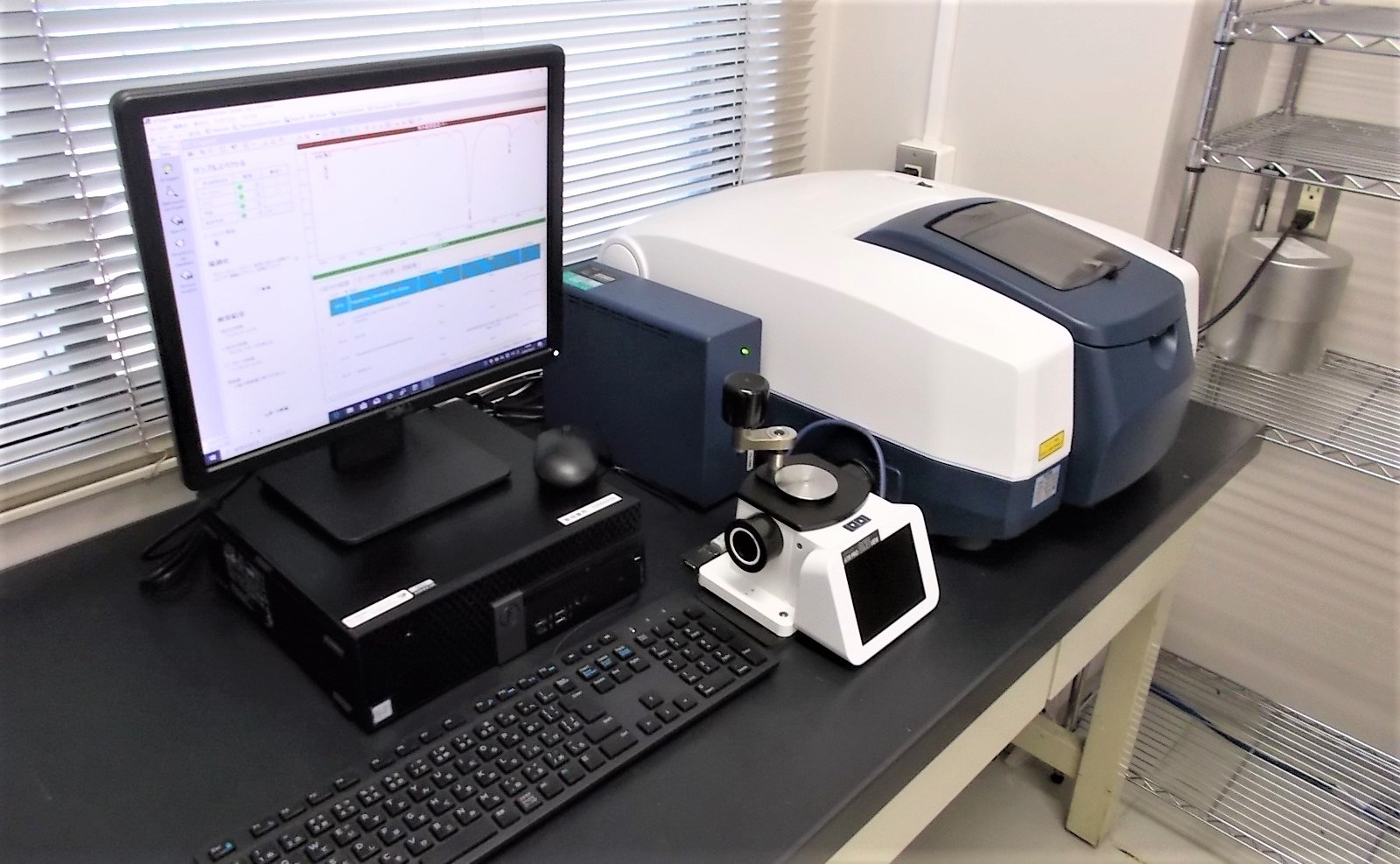
FT-IR
-
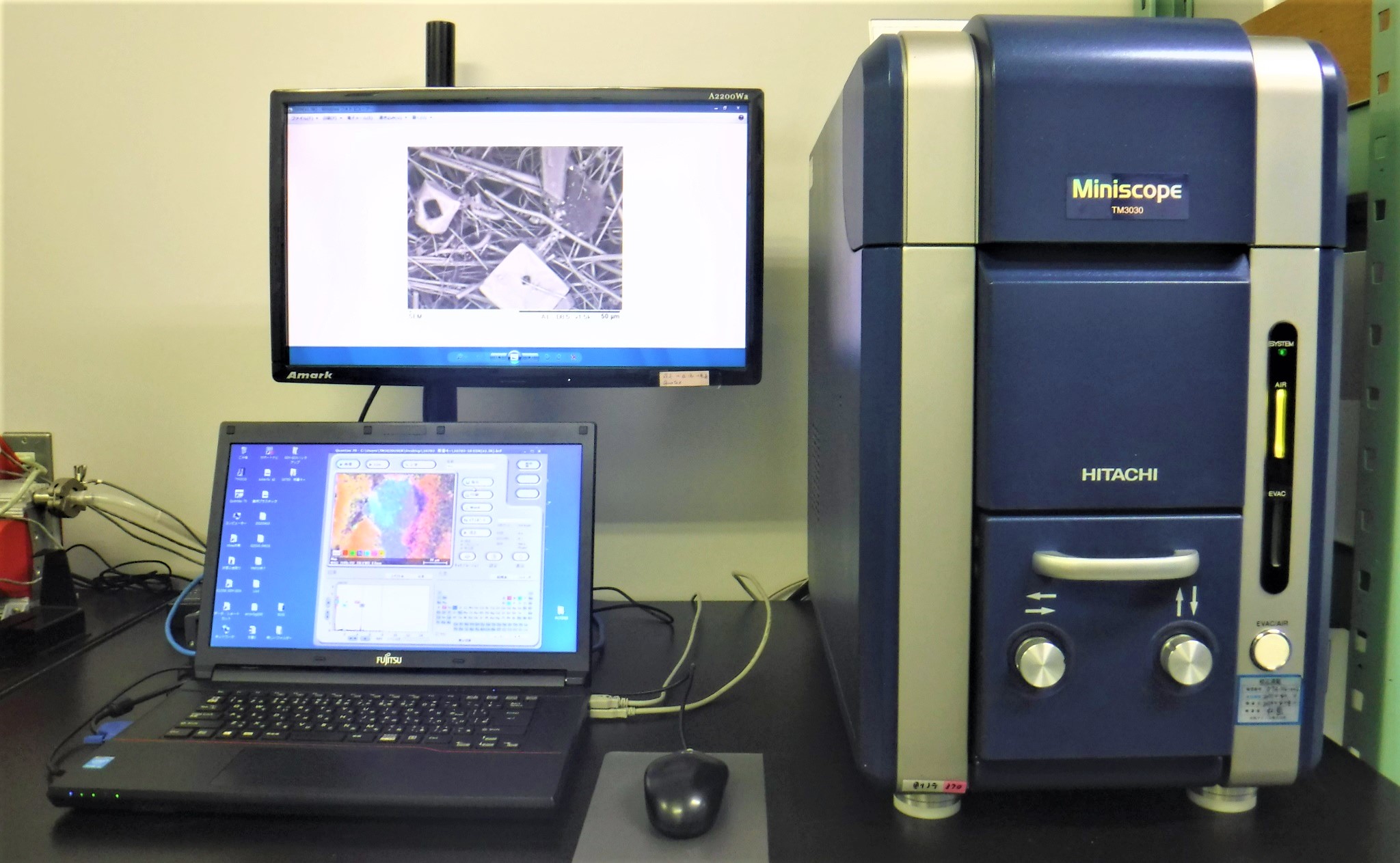
SEM-EDX
-
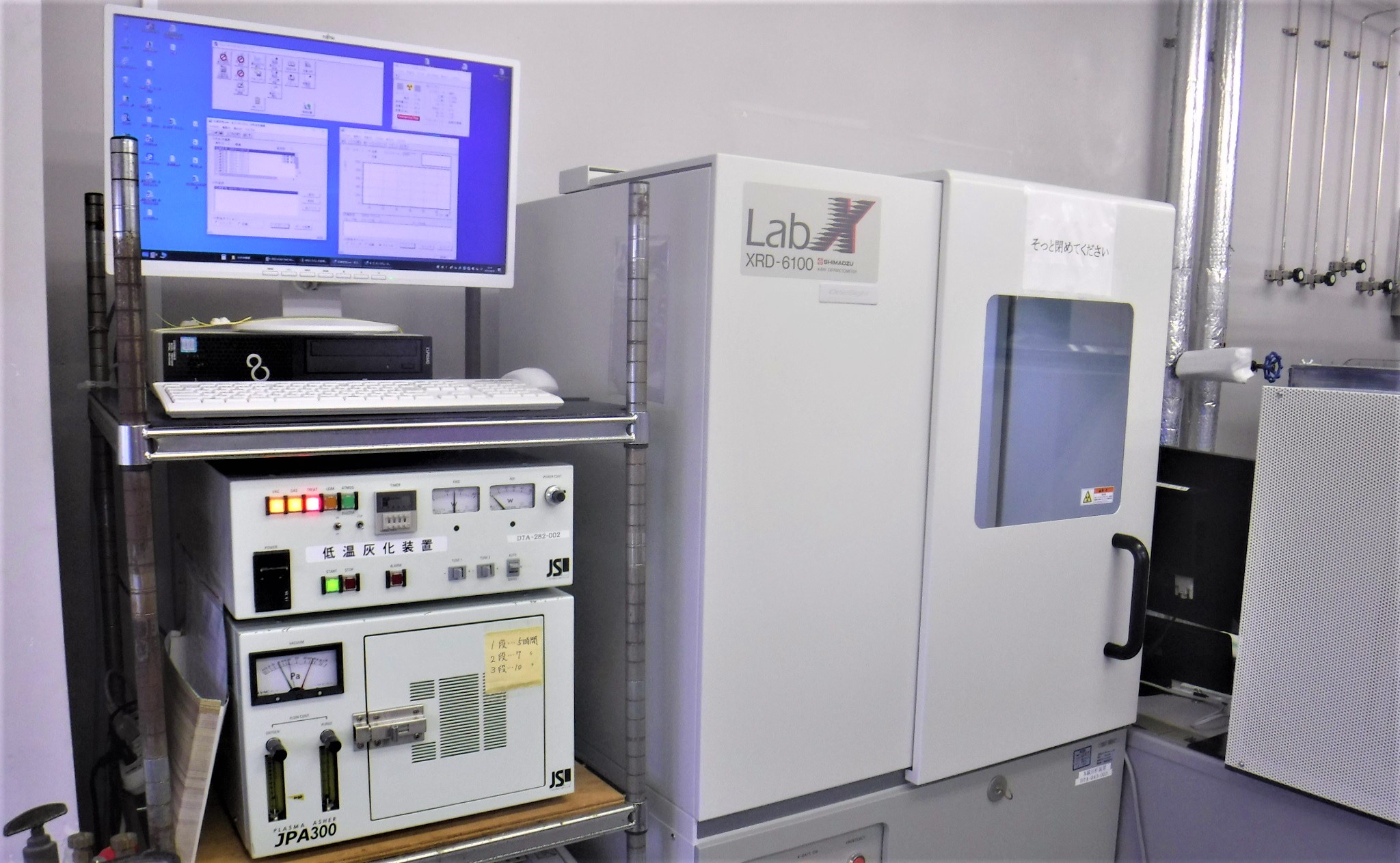
XRD
We use the following equipment to perform comprehensive analyses of foreign matter mixed in products, deposits on pipes, and other unknown samples.
- FT-IR: Fourier transform infrared spectrophotometer
- SEM-EDX: Energy dispersive X-ray analysis with electron microscope
- XRD: X-ray diffraction
For foreign matter mainly composed of organic substances, qualitative analysis of organic compounds is performed by FT-IR.
For foreign matter mainly composed of inorganic substances, SEM-EDX is used to analyze the composition ratio of the elements, and if an inorganic compound form is required, XRD is used for analysis.
If you need to survey an unknown substance, please contact us and we will propose an survey method.
Radioactivity Surveys (Environment, Food, Waste, etc.)
-
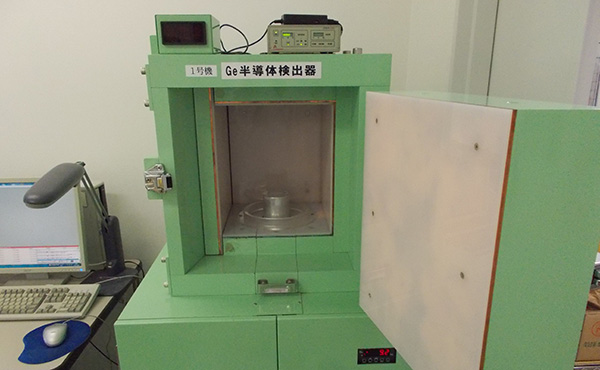
-
We have acquired ISO17025 for radioactivity analysis, and perform gamma-ray nuclide analysis with a germanium semiconductor detector.
In addition to radionuclides I-131, Cs-134, and Cs-137, we also measure natural radioactive substances such as K-40 and Pb-214.Click here for more information about radioactivity analysis (environment, food, waste, etc.)
Dioxins Analysis

We support quality systems such as MLAP and Ministry of the Environment order qualifications.
With six HRGC / HRMS units and one of the leading analytical facilities in Japan, we provide fast and reliable data with high productivity.
In recent years, surveys for POPs, etc. have required analysis technology and precision management equivalent to that for dioxins, and we are making maximum use of our know-how.
Analysis of Linear Alkyl Benzene Sulfonic Acid and its Salts (LAS)
Environmental Hormone Analysis
Environmental hormones (endocrine disrupting chemicals) are said to enter the body, and behave like hormones while inhibiting our hormones.
There are various types, and the effects of many of them are still unclear. Surveys and research are currently underway to clarify these effects. We provide quick and accurate analysis results with abundant experience and advanced technology.
Analysis of Harmful Air Pollutants
Many substances such as benzene and other volatile organic compounds (VOC), aldehydes, and heavy metals are designated as harmful air pollutants. In addition, health problems caused by indoor air pollution (sick building syndrome) are also regarded as a problem.
We have an automated system for canister concentration-GC / MS analysis, which enables highly sensitive measurement of multiple components at the same time.
Organofluorine Compound (PFOS, PFOA) Analysis
PFOS (perfluorooctane sulfonic acid) and PFOA (perfluorooctanoic acid), which are representative of organofluorine compounds, are used in products such as cosmetics and cooking utensils, and their toxicity and bioaccumulation are regarded as problems. We can use the highly sensitive and highly selective LC-MS / MS methods to analyze these organofluorine compounds.
Analysis of Cyclic Siloxane (D3 to D6)
In the fields of sewerage facilities and precision equipment, it is necessary to monitor the concentration of cyclic siloxane.
Cyclic siloxane is contained in many of the daily necessities we use, such as shampoos and cosmetics. These products are discharged as domestic wastewater, and most accumulate in sewage sludge at sewage treatment plants.
Sewage sludge is recovered as methane and reused for energy. But, in the process, cyclic siloxane causes wear on internal combustion engines, shortens the life of parts, and causes deterioration of the performance of the denitration catalyst. It is one of the causes of increasing maintenance management costs.
Cyclic siloxane has also become a problem in the printing industry, because it adheres to printed matter and repels ink. In the field of precision electronic equipment, it causes electrical contact failure and is regarded as a problem from the aspect of quality control.
Cyclic siloxane can be easily collected in a bag or TENAX collection tube. Since the sample is collected by the customer, there is no labor fee for collection.
Water Quality Analysis, Air / Exhaust Gas Analysis, Odor Measurement

We perform trace analysis of environmental pollutants and harmful substances, measurement and analysis based on various laws and regulations, and environmental monitoring surveys.
Specialized engineers are also available for consultation regarding the measurement and analysis of substances other than those regulated by analytical laws, such as soil, waste, dust, and metals.
- Water quality analysis (environmental standards, wastewater standards, pesticides, E. coli, etc.)
- Air / exhaust gas analysis (exhaust gas from factories / incinerators, general environmental atmosphere)
- Odor measurement (specific harmful substances, odor index)
Mercury Measurement and Analysis
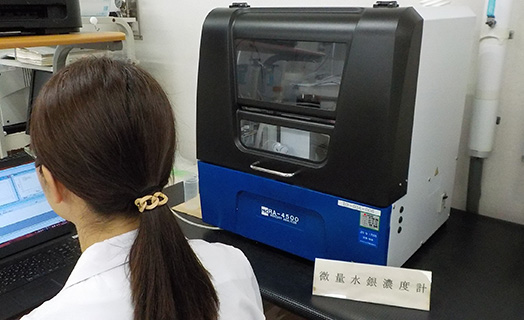
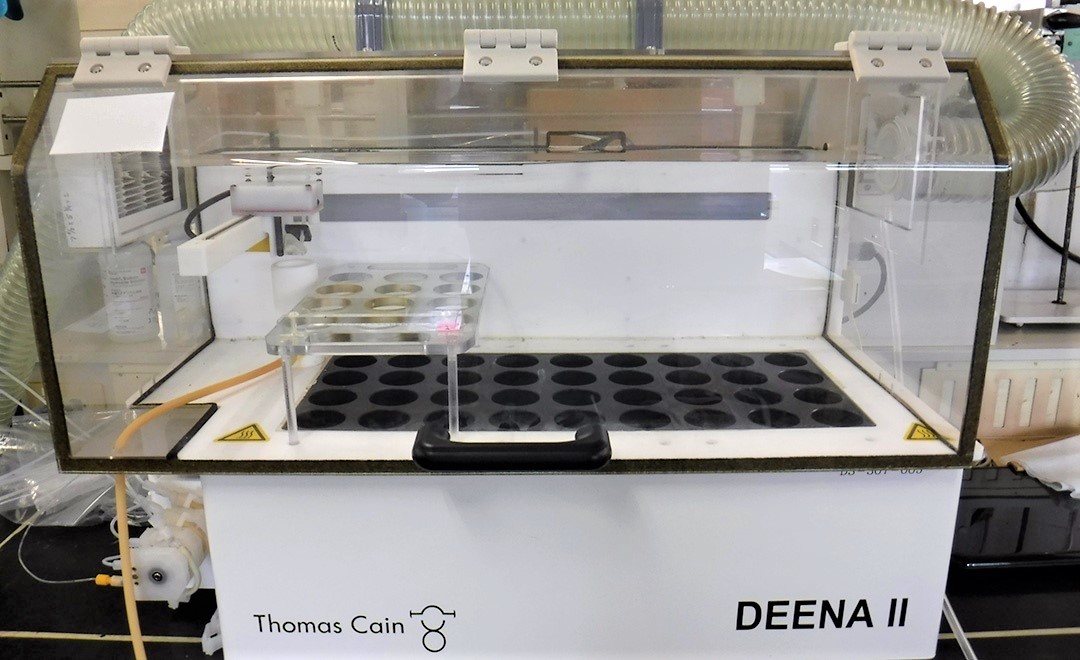
On May 18, 2017, the number of countries that signed the Minamata Convention on Mercury reached 50, and therefore the Minamata Convention came into effect 90 days later, on August 16, 2017.As a result, laws and regulations related to regulating mercury emitted into the atmosphere, such as the Act for Partial Revision of the Air Pollution Control Act (Act No. 41 of 2015), came into effect on April 1, 2018. Mercury emission regulations, such as notification of mercury emission facilities and compliance with emission standards, started on the same day.
We have introduced the latest analytical equipment to measure mercury (particulate / gaseous) in exhaust gas in accordance with the revised law. We provide quick and accurate measurement and analysis of mercury concentration, such as analysis of the concentration in raw materials and fuel that a facility requires to notify the government.
Analysis of Metal Elements by Morphology

Metal elements exist in several chemical forms with different oxidation numbers and structures, and the process of separating and quantifying the chemical forms of these elements is called morphological analysis (speciation analysis).
We use "IC-ICP / MS," which is a combination of an ion chromatograph (IC) and an inductively coupled plasma mass spectrometer (ICP / MS), to provide the concentration of each chemical form of metal element.
In March 2019, the Ministry of the Environment added "Measurement of chromium in air dust by morphology" to the manual for measuring harmful air pollutants. In the future, evaluation based on the guideline values for reducing the health risk of hexavalent chromium will be possible by measuring hexavalent chromium alone with this morphological measurement.
There are various chemical forms of metal compounds in the environment, and biochemical properties such as toxicity, metabolism, and reaction differ depending on the chemical form. Even if the metal element concentration is the same, the effect on biological organisms changes depending on the abundance ratio of each chemical form.
Therefore, it is important to analyze the concentration of each chemical form and identify and quantify different types of elements. (However, there is no evaluation standard based on the ratio of toxic elements.)
Drinking Water Examination
According to the Water Supply Act, water that is supplied by public utilities must be inspected by an examination agency that is registered with the Minister of Health, Labor, and Welfare.
In addition, drinking water examination of specific buildings must be conducted by a registered organization in accordance with the "Act on Maintenance of Sanitation in Buildings." We conduct water quality examinations in accordance with our registration with the Minister of Health, Labor, and Welfare (Article 20-4, Paragraph 2 of the Supply Act) and as a water quality examination business for drinking water in buildings. We can also conduct analysis of microorganisms, such as Cryptosporidium.
Measurement of the Apparent Electrical Resistivity of Dust
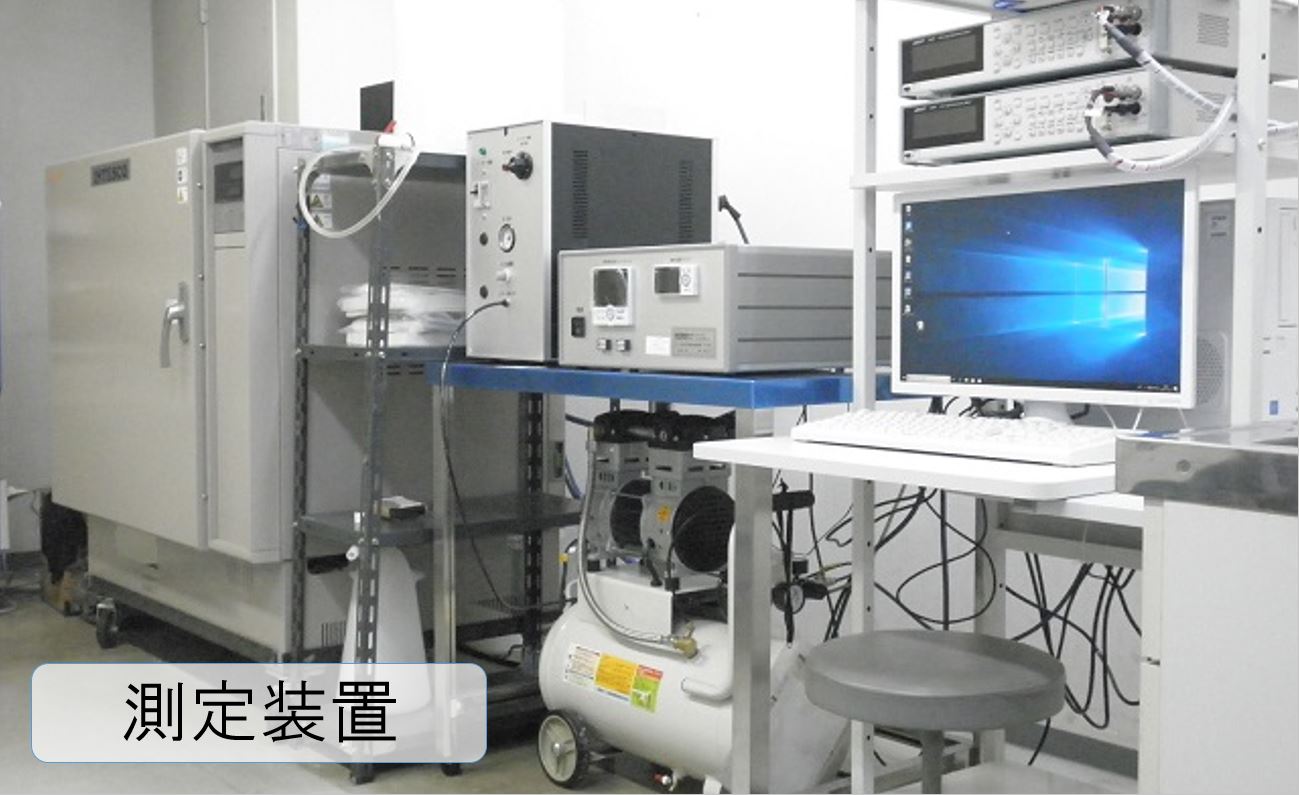
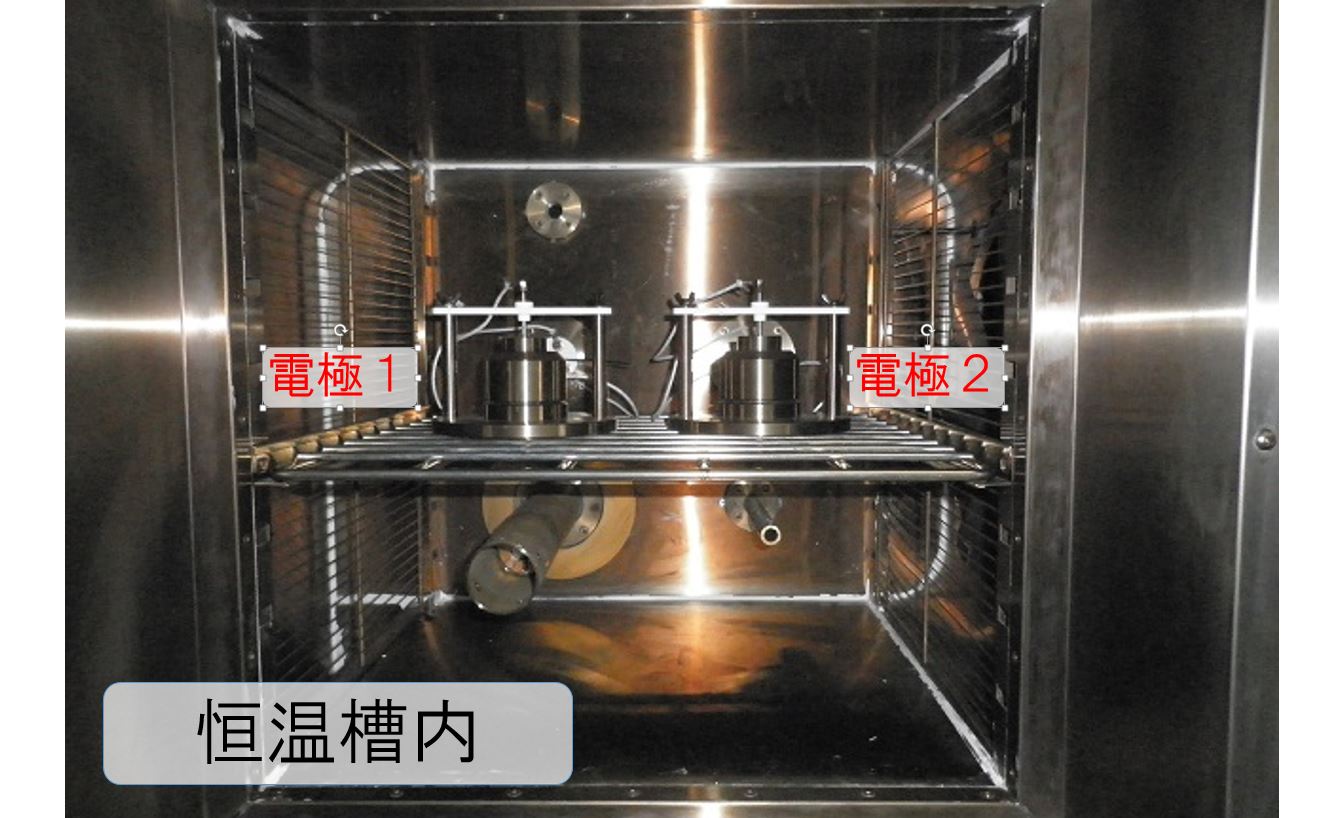
The apparent electrical resistivity of dust has a great effect on the performance of the electrostatic precipitator, which is the processing device, so it is a very important measurement item in maintenance and management.
We have one of the few measuring devices (automatically controllable) available in Japan, and have achieved a long record of measurements.
Work Environment Measurements
It is necessary to prevent health problems in workplaces where harmful substances such as organic solvents, lead, specified chemical substances, and dust are handled.
We provide consultation for measuring, evaluating, and improving working environments, in accordance with the "Industrial Safety and Health Act." We also measure working environments and automatically monitor dust to prevent exposure to dioxins during incinerator operation and inspection / demolition work, and for the dismantling of buildings that contain asbestos.
Noise / Vibration Measurement
We measure noise and vibration generated from various equipment in construction workplaces and factories, as well as roads, railroads, and aircraft in accordance with the Noise Regulation Act, Vibration Regulation Act, JIS, and various manuals.
In order to implement noise and vibration reduction measures, it is important to accurately understand the source, propagation path, and the status of the target facilities to be maintained.
In addition to general measurement, we use frequency analysis, sound source probe equipment, and a constant monitoring system that uses communication, to propose the optimum measurement method according to the purpose and situation. At the same time, we consider reduction measures from measurement to analysis and simulation.
Further, we are entrusted with a noise map (superficial evaluation) for "constant monitoring of motor vehicle traffic noise" from many local governments.
Fauna / Flora / Ecosystem Surveys
-

-
We conduct surveys of fauna, flora, and ecosystems in a variety of natural environments, from familiar urban and rural settings to pristine natural environments such as national parks and quasi-national parks.
- Surveys, conservation, and monitoring for environmental impact assessments
Analysis and evaluation of habitation and breeding environment based on field surveys
Conservation of species on the Red List (Endangered Wildlife List)
Formulation of a plan for the migration of rare animals and plants
On-site confirmation and monitoring with surveillance
cameras- Understanding the distribution of alien species that threaten the natural environment of a region- Gathering basic information for formulating regional biodiversity strategies

